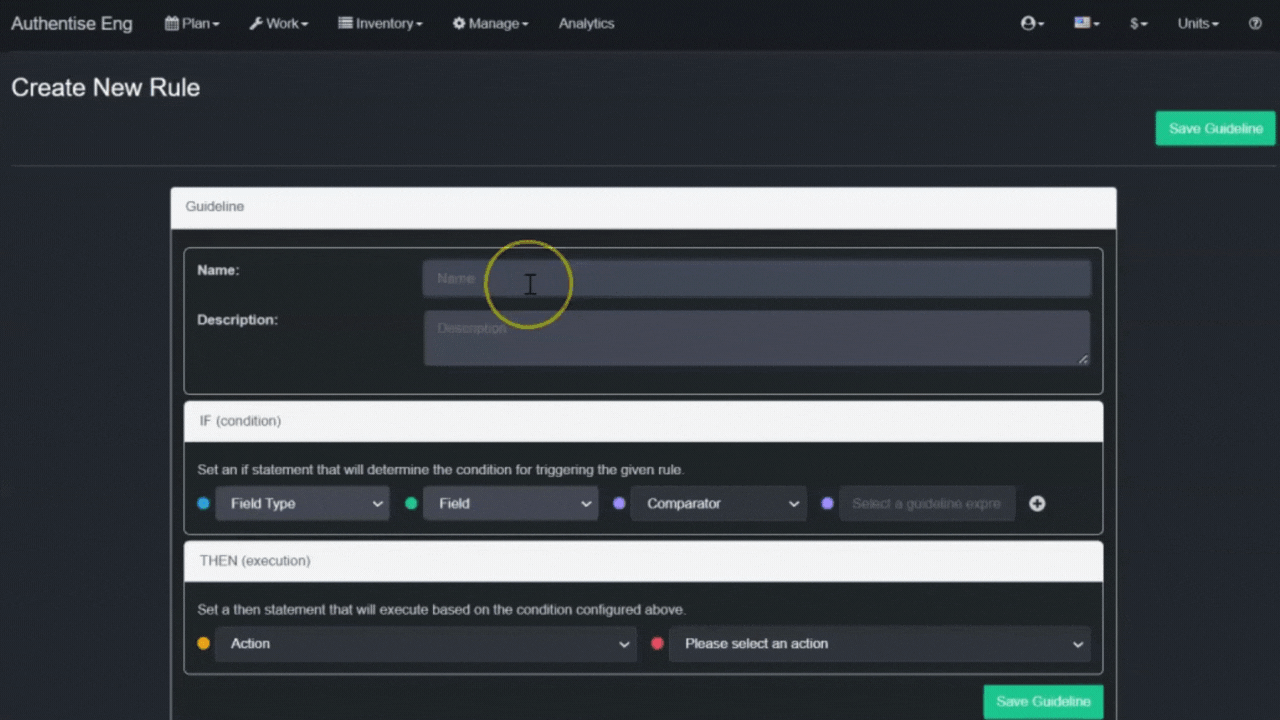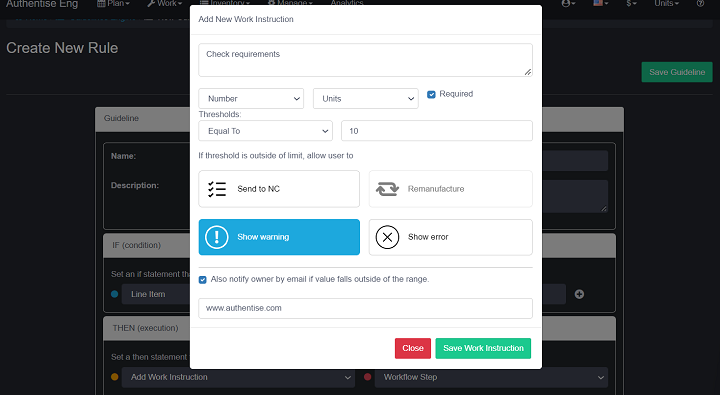Authentise develops data-driven process automation software and manufacturing workflow tools for additive manufacturing, which customers like Boeing, Ricoh, Danfoss, and more use to improve traceability, quality, and transparency, and reduce cost and effort. Its latest solution is Guidelines—a set of features for users of its connected aMES workflow management engine for AM that puts control back in the hands of the operators, but in a much quicker, more automated way. This new rules engine changes how tribal knowledge is collected, AI is delivered, and compliance is guaranteed during 3D printing.
“Guidelines very intentionally puts the power to make decisions back into the hands of those on the frontlines, whom most of the Industry 4.0 movement has so far marginalized. We believe this will, in the medium term, also help us deliver more acceptable forms of Artificial Intelligence to the industry,” said Simon McCaldin, VP of Open Innovation at Authentise. “aMES has now reached the level of maturity necessary to capture the data that can drive advanced machine learning systems. However, operators are rightly cautious of adopting systems operating as a black box with no oversight. Guidelines represent a more transparent delivery method and will increase real-world acceptance, while ensuring compliance with process control procedures. Now that it is built, Authentise will not monopolize the channel that Guidelines represents. We’re committed to keeping this new delivery method open to all smart algorithms providers and are grateful to Innovate UK for believing in this approach and supporting the creation of Guidelines.”
Using Guidelines, operators can use any type of engineering or production data as input to form if-this-then-that rules; for instance, very generally speaking, if your print is warping, then raise the bed temperature, or, more specifically, even heat the build plate to a specific temperature when a certain printer is being used. At any point during the printing process, these rules can trigger suggestions to suggest changes in parameters or behavior in order to achieve a more sustainable, successful build outcome.
The engine uses a combination of geometry features, QA measurements, machine sensor feedback, and more as triggers, and when necessary, the suggestions are delivered to the user during the engineering stage, or even during production.
“If-this-then-that rules are not new in robotic process automation but have yet to be used successfully in the manufacturing context beyond basic principles such as quoting. We realized their broader power almost immediately and spent the last 10 years building, with aMES, a contextual data engine capable of harnessing them. They represent a break from more prescriptive tools, such as our workflow generator. This permissive approach makes them the ideal channel to ensure that rules are followed while giving experienced engineers and operators the latitude to make the decisions necessary on a case-by-case basis,” said Andre Wegner, CEO of Authentise.
The Guidelines rules engine was supported by Innovate UK’s Transforming Foundation Industries challenge, under the Scalable AM Rule Creation & Dissemination (SAMRCD) grant. The initiative, on which Authentise and ASTM International are collaborating with partners TWI, Photocentric, and MPI, is working to help facilitate a major change in AM adoption for advanced materials. The planned result is to deliver working rules that optimize material workflows and correspond with manufacturing parameters in order to maximize part acceptance rates, so it makes sense that the new Guidelines engine by Authentise is supported by this particular grant.
As Wegner said, Authentise is lucky to be working with partners like ASTM “to ensure that this novel framework is not only filled with tribal knowledge present within each organization but uses existing standards as a starting point.”
“There is great value in considering how Standards can be fully applied in the digital world. Guidelines has the potential to evolve how Standards can be accessed and embedded in manufacturing processes with increased accessibility,” said Dr. Martin White, Head of Additive Manufacturing Programs – Europe at the ASTM Additive Manufacturing Center of Excellence. “We’re excited to work with Authentise to ensure that users can access applicable standards in this way. Not only does this have the potential to ensure greater compliance but doing so in a digital framework allows our partners to potentially reduce audit costs too.”
You can learn more about the new Guidelines AM rules engine from Authentise at formnext 2022 next week in Booth 11.0-A51.
Subscribe to Our Email Newsletter
Stay up-to-date on all the latest news from the 3D printing industry and receive information and offers from third party vendors.
You May Also Like
Gorilla Sports GE’s First 3D Printed Titanium Cast
How do you help a gorilla with a broken arm? Sounds like the start of a bad joke a zookeeper might tell, but it’s an actual dilemma recently faced by...
Nylon 3D Printed Parts Made More Functional with Coatings & Colors
Parts 3D printed from polyamide (PA, Nylon) 12 using powder bed fusion (PBF) are a mainstay in the additive manufacturing (AM) industry. While post-finishing processes have improved the porosity of...
$25M to Back Sintavia’s Largest Expansion of Metal 3D Printing Capacity Since 2019
Sintavia, the digital manufacturing company specializing in mission-critical parts for strategic sectors, announced a $25 million investment to increase its production capacity, the largest expansion to its operations since 2019....
Velo3D Initiates Public Offering in a Bid to Strengthen Financial Foundations and Drive Future Growth
Velo3D (NYSE: VLD) has been among a number of publicly traded 3D printing firms that have attempted to weather the current macroeconomic climate. After posting a challenging financial report for 2023,...


































